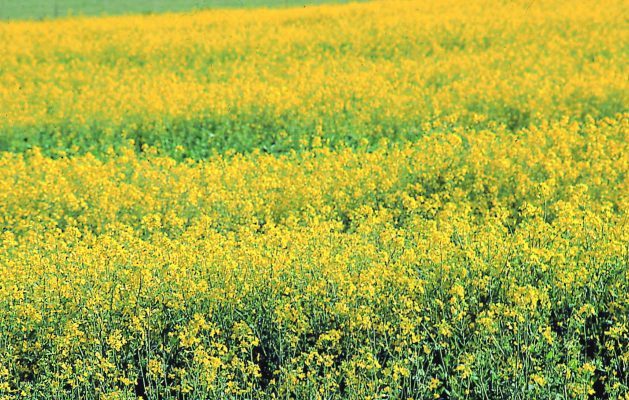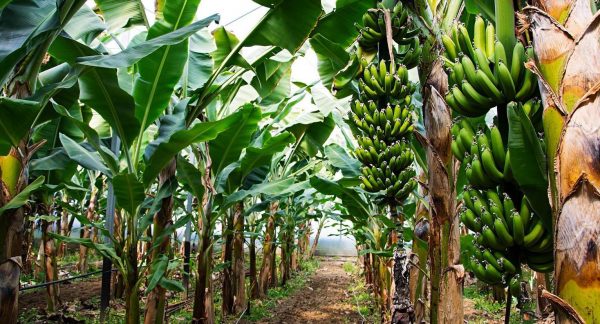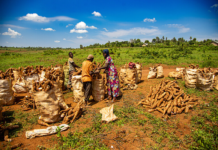By Nita Karume :
Canola is a profitable cropping option for many cropping regions around the world. It is also known to bring diversity in terms of cropping rotations. The crop is grown for its seed which is crushed for the oil used in margarine, cooking oils, salad oils and edible oil blends. The oil offers a healthier alternative as it increases the intake of unsaturated fats which are ideal for maintenance of good health.
Canola fits well into a crop rotation in the 450 mm-700 mm rainfall zones. However, newer varieties and farming practices allow canola to be grown in much drier environments. Unfortunately, the crop rotation makes the crop vulnerable to herbicide carryover. On the other hand, canola plants affected by the herbicide residues in the soil can be stunted only slightly and make full recoveries. Alternatively, they can be delayed significantly and even killed.
For instance, death may occur at the seedling stage in the case of Group 14 herbicide carryover. Conversely, for Groups 2 and 4, plants start off looking healthy but deteriorate over time. The herbicide carryover damage can be spotty. This makes it easier to identify the affected plants and consequently waiting before taking the best course of action. Nevertheless, reseeding may be required should the affected area be large.
Effects of herbicide carryover
It is not usually easy to determine whether affected plants will die. This is because said plants can take weeks to die. Alternatively, they may live but with severe stunted growth resulting in lack of flowering. As such, it is often advisable and safe to assume the worst of the affected plants, even if they may show signs of life. This will help reseeding in order to save the harvest. On the other hand, it is important to note that when reseeding one should use a crop with tolerance to the herbicide group in question.
Herbicide carryover symptoms
Injury from herbicide residue in the soil is known to occur only in fields with a history of Group 2, 4, 5 and 14 herbicide applications. Moreover, since soil characteristics and dry conditions are able to extend the at-risk period for these herbicides, carryover issues will occur when required re cropping intervals are not followed.
Symptoms for canola damage by Groups
Group 2: Canola is highly sensitive to Group 2 carryover. Symptoms include purpling, yellowing and stunted growth. There are also signs of reduced leaf size and thickened leaf petioles. Very slow plant growth and minimal recovery over time happens in severe cases. There could also be deformity at the growing point. Furthermore, these symptoms are known to persist for weeks.
Group 4: Canola plant growth may start normal. However, it can cause clear deformity of new leaves and stems as the plant takes up residual Group 4 herbicide. The deformity can include twisted stems, callused stems, cupped deformed leaves as well as the development of deformed tissues and secondary roots.
Group 5: Symptoms can include wilting and yellowing of oldest leaves.
Group 14: Symptoms of Heat damage to canola are yellow and shriveled leaves, and bleached seedlings. Seedlings usually die prior to or shortly after emergence.
Sprayer contamination symptoms
Sprayer contamination can and will occur due to lack of a complete wash between products. For instance, herbicide residue usually builds up in sumps, filters and boom ends. Furthermore, contamination will occur should herbicides and additives be allowed to sit in a sprayer for more time than required.
To diagnose sprayer tank contamination, look for clear distinctions between sprayer strokes. This is because first strokes may be worse than subsequent ones. Thus attributed to the gradual washing out of contamination from the hoses and nozzles. Moreover, the plants that are within missed areas where the strokes cover only partly can provide further evidence. On the other hand, damage following distinct lines could also be seeder related. This is either as a result of seed depth or seed-placed fertilizer. Nonetheless, identify the differences in damage after refilling in the case of contamination of several tank-fills.
Fortunately, plant damage from spray tank contamination is usually much more predictable compared to that from herbicide carryover. For instance in sprayer contamination the crop is likely to do just fine if the plants are recovering within a week or so of the sprayer mishap. However, that same assurance is not possible with carryover in the soil as damage could continue to get worse.








